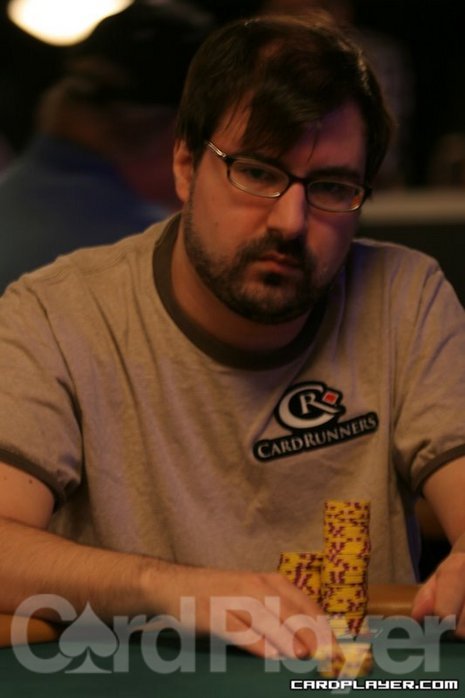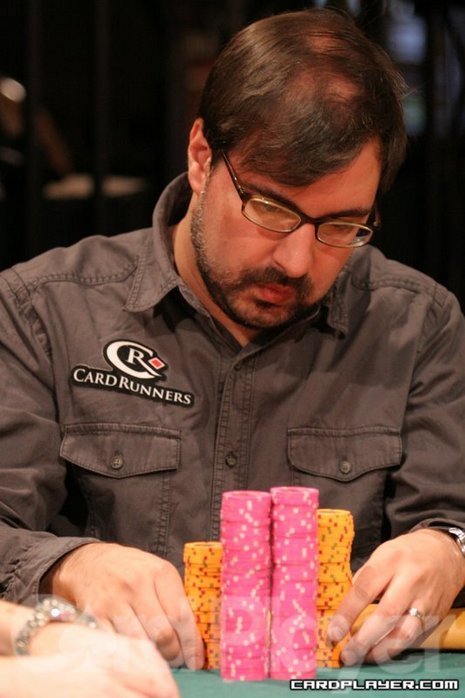






A Poker Life -- Matt MatrosA Poker Life: Matt Matrosby Julio Rodriguez | Published: Aug 24, 2011 |
|
|

When he’s not winning titles at the World Series of Poker, you can find Matros writing his monthly poker column for Card Player magazine, creating the next generation of poker whiz kids at the Card Runners training site or even appearing on CNN and in The Washington Post for his opinions on Black Friday.
The poker author is in the process of writing his first fiction novel, but that didn’t stop him from snagging a gold bracelet this summer, picking up just over $300,000 for winning the $2,500 mixed hold’em event. In total, the New York native has two WPT final tables, five WSOP final tables and two bracelets.
A Poker Education
Matros has always excelled in the classroom. After graduating from high school as valedictorian, he moved on to Yale University to earn his bachelor’s degree in mathematics. It was there that he began to learn the fundamentals of poker.
“I played poker recreationally as a kid, but I didn’t take it seriously until my senior year in college,” he said. “For three years I continued to play on the side, getting better at the game and discussing it with friends while I worked as a software quality engineer.”
In 2002, Matros decided to quit his job to enroll in the fiction writing program at Sarah Lawrence College, seeking a graduate degree. It was there that his passion for poker grew into a full fledged profession.
“I was in grad school for fiction writing, but obviously, that doesn’t pay very well,” he admitted. “I spent the majority of my spare time playing poker and I started to see some really positive results. I guess you could say that I was a semi-professional at the time. I would write in the mornings and then spend my evenings either playing online or making the drive to Connecticut to play in the casinos.”
Though he was in school to write fiction, Matros managed to write himself into his first book, a play-by-play of his start in the game. “During the summer between my first two years there, I sat down to write my first book, The Making of a Poker Player. At this point, the book is probably best served as a trip down memory lane, telling the story of how a player would have come up through the ranks before the online poker boom. It’s not heavy on strategy, but hopefully people still find that it’s a fun read.”
A Big Score Kick Starts A Solid Career

He continued to play in his free time and found a great deal of success, especially at the WSOP, where he has since accumulated 23 cashes and nearly $1 million in earnings. He narrowly missed his first bracelet in 2008, finishing sixth in a massive $1,500 no-limit hold’em event with 2,693 entrants. After another WPT final table appearance, he finally broke through for his first career win, taking down the 2010 $1,500 limit hold’em event at the Rio for $189,870.
This summer, Matros picked up his second bracelet in the $2,500 mixed hold’em event, banking $305,501. Incredibly, he has managed to cash in that event three years in a row. He now has 12 career cashes in events that include limit hold’em, but is quick to say that he doesn’t consider himself to be a specialist in that discipline.
“I wouldn’t call myself a limit hold’em specialist,” he explained. “Limit hold’em was definitely my bread and butter game for many years right around the time I was in graduate school, but I don’t think I’m a one-trick pony or anything. Because there has been this massive influx of no-limit hold’em players over the past six or seven years, I’m just one of many who happen to be competent at that game. But there aren’t as many of us who play limit hold’em at a high level, so I guess I tend to stand out more in that discipline as one of the leftovers from that era right before the Moneymaker boom.”
Even so, Matros did admit that his skill in limit hold’em was the difference in capturing the mixed hold’em title, a tournament that switches from no-limit to limit every half hour.
“You really have to know both disciplines in order to do well in the tournament, but there’s no denying that limit hold’em plays a bigger role over the course of the event. Not only do the limit hands play bigger, because most hands are going to showdown, but they also play faster, allowing each table more hands during that portion of the hour.”
When asked for a description of his playing style, Matros admitted that he’s probably a bit more conservative than his younger counterparts. “I tend to associate with the math guys,” he said. “I try to have a solid core strategy and an approach that works well with other tough players. If I see players at the table making glaring errors, then I’ll alter my strategy to take advantage of those mistakes, but for the most part, I try to stick to the game plan. In general, I don’t try to read minds or level anyone. Some of the younger players are into that, but I prefer to stay pretty balanced, which obviously works well in a game like limit hold’em. In a game like no-limit hold’em, there’s much more maneuverability, so that’s when creativity is rewarded.”
Those Who Can, Teach

“There’s a much quicker learning curve in poker nowadays. Complete beginners can pick up the game in a fraction of the time. Obviously, Black Friday was a bit of a letdown for most of our U.S. customers, but thankfully the site caters to a good portion of international players who aren’t going anywhere. I obviously can’t play online anymore, but I can still plug some live hands into a hand replayer and explain my thought process to students.”
Thanks to his reputation as a limit hold’em player, Matros is already getting requests for one-on-one training sessions. Now that online poker is no longer available to U.S. players, Matros recognizes the importance of becoming a more well-rounded player.
“Mixed games aren’t going away anytime soon and I think you can see that even with the increased field sizes in some of the WSOP events we had this summer. Players who specialize in a specific game are really going to be in a lot of trouble if online poker doesn’t come back. With online poker, you can find several games at all hours of the day, but when you are playing live, sometimes the live ones are going to be in games you aren’t comfortable with. I think the successful professionals are going to be the players who can adapt to any game and can follow the fish from table to table, from game to game and even from stake to stake.”
Moving Forward
Living in Brooklyn, New York, Matros fully acknowledges that online poker was a big part of his livelihood. Not only is he now forced to travel to find action, but Black Friday has also affected his coaching. That being said, he’s not exactly ready to jump ship and move abroad.
“I’m pretty settled in New York and my wife has a great job at the Whitney library. Honestly, I think I’m too old to just uproot my life and move elsewhere. I’m not one of these young kids that have nothing to lose and can drop everything and head to Canada. The process is harder than most people think and frankly, we don’t know what is going to happen here in the States anyway.”

“Luckily for me, I have the financial cushion to really focus on my writing over the next year or so. The story is about a female, college sophomore, her roommates and friends and the people she falls in love with. There’s a good amount of humor in it and I think it will appeal to those people who didn’t know what they were doing when they were 19 and in college. Needless to say, I don’t see it having the same target demographic that my first book enjoyed, but hopefully people find it entertaining anyway.”
Features
The Inside Straight
Strategies & Analysis
Commentaries & Personalities